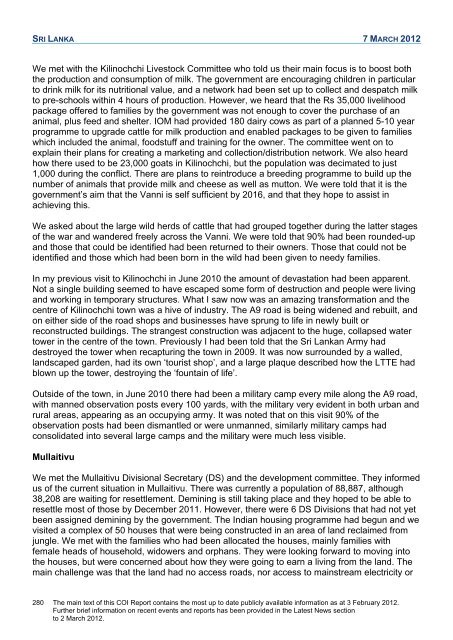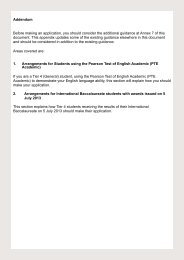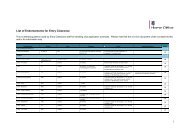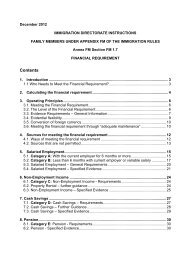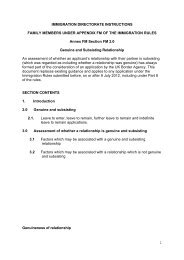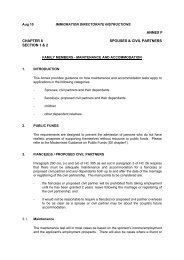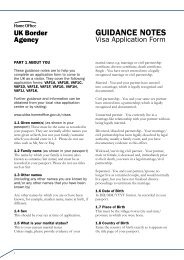COI Report March 2012 - UK Border Agency - Home Office
COI Report March 2012 - UK Border Agency - Home Office
COI Report March 2012 - UK Border Agency - Home Office
Create successful ePaper yourself
Turn your PDF publications into a flip-book with our unique Google optimized e-Paper software.
SRI LANKA 7 MARCH <strong>2012</strong><br />
We met with the Kilinochchi Livestock Committee who told us their main focus is to boost both<br />
the production and consumption of milk. The government are encouraging children in particular<br />
to drink milk for its nutritional value, and a network had been set up to collect and despatch milk<br />
to pre-schools within 4 hours of production. However, we heard that the Rs 35,000 livelihood<br />
package offered to families by the government was not enough to cover the purchase of an<br />
animal, plus feed and shelter. IOM had provided 180 dairy cows as part of a planned 5-10 year<br />
programme to upgrade cattle for milk production and enabled packages to be given to families<br />
which included the animal, foodstuff and training for the owner. The committee went on to<br />
explain their plans for creating a marketing and collection/distribution network. We also heard<br />
how there used to be 23,000 goats in Kilinochchi, but the population was decimated to just<br />
1,000 during the conflict. There are plans to reintroduce a breeding programme to build up the<br />
number of animals that provide milk and cheese as well as mutton. We were told that it is the<br />
government‘s aim that the Vanni is self sufficient by 2016, and that they hope to assist in<br />
achieving this.<br />
We asked about the large wild herds of cattle that had grouped together during the latter stages<br />
of the war and wandered freely across the Vanni. We were told that 90% had been rounded-up<br />
and those that could be identified had been returned to their owners. Those that could not be<br />
identified and those which had been born in the wild had been given to needy families.<br />
In my previous visit to Kilinochchi in June 2010 the amount of devastation had been apparent.<br />
Not a single building seemed to have escaped some form of destruction and people were living<br />
and working in temporary structures. What I saw now was an amazing transformation and the<br />
centre of Kilinochchi town was a hive of industry. The A9 road is being widened and rebuilt, and<br />
on either side of the road shops and businesses have sprung to life in newly built or<br />
reconstructed buildings. The strangest construction was adjacent to the huge, collapsed water<br />
tower in the centre of the town. Previously I had been told that the Sri Lankan Army had<br />
destroyed the tower when recapturing the town in 2009. It was now surrounded by a walled,<br />
landscaped garden, had its own ‗tourist shop‘, and a large plaque described how the LTTE had<br />
blown up the tower, destroying the ‗fountain of life‘.<br />
Outside of the town, in June 2010 there had been a military camp every mile along the A9 road,<br />
with manned observation posts every 100 yards, with the military very evident in both urban and<br />
rural areas, appearing as an occupying army. It was noted that on this visit 90% of the<br />
observation posts had been dismantled or were unmanned, similarly military camps had<br />
consolidated into several large camps and the military were much less visible.<br />
Mullaitivu<br />
We met the Mullaitivu Divisional Secretary (DS) and the development committee. They informed<br />
us of the current situation in Mullaitivu. There was currently a population of 88,887, although<br />
38,208 are waiting for resettlement. Demining is still taking place and they hoped to be able to<br />
resettle most of those by December 2011. However, there were 6 DS Divisions that had not yet<br />
been assigned demining by the government. The Indian housing programme had begun and we<br />
visited a complex of 50 houses that were being constructed in an area of land reclaimed from<br />
jungle. We met with the families who had been allocated the houses, mainly families with<br />
female heads of household, widowers and orphans. They were looking forward to moving into<br />
the houses, but were concerned about how they were going to earn a living from the land. The<br />
main challenge was that the land had no access roads, nor access to mainstream electricity or<br />
280 The main text of this <strong>COI</strong> <strong>Report</strong> contains the most up to date publicly available information as at 3 February <strong>2012</strong>.<br />
Further brief information on recent events and reports has been provided in the Latest News section<br />
to 2 <strong>March</strong> <strong>2012</strong>.


